When to use 3D printing vs when to use injection molding
Learn what to consider when making a choice between 3D printing and injection molding, the benefits of each manufacturing method, and more.
Read articleYou’ve come to the right place. Hubs is now Protolabs Network.
The same broad capabilities, exceptional quality and competitive pricing under a new brand.






EN
Find out about the manufacturing technique used to injection mold a second material over or around a part to create a new one.

In injection molding, “overmolding” refers to a process where multiple materials are used to create a cohesive, often multi-textured product with improved qualities and versatility. Here’s a guide to using the technique, including how it works, its common industrial uses, and more.
Overmolding is a manufacturing process that is often used in injection molding, in which a part is encased or covered with a second material – typically a rubber or plastic – to create a single, integrated product. It enhances product durability, grip, aesthetics, and functionality.
Overmolding works by first placing the injection-molded part into a mold. Next, a second material is injected over or around the part. The two materials are then bonded together during the curing process.
In overmolding, a variety of materials can be used to achieve specific properties and functions. Several common combinations include:
Thermoplastic over thermoplastic. Using two different thermoplastic materials, such as a rigid plastic material like PC and a softer rubber-like material like TPU for improved grip or comfort.
Thermoplastic over metal. Coating metal parts with a protective or cushioning plastic layer, such as encasing steel components with PP, to enhance corrosion resistance and reduce noise or vibration.
Thermoplastic over elastomer. Combining a rigid plastic such as ABS with a flexible elastomer for products requiring both durability and flexibility, like tool handles or medical devices.
Silicone over plastic. Adding a silicone layer to a plastic material such as PC for water resistance, sealing, and enhanced tactile properties.
TPE over TPE. Using different types of TPEs for varying textures, colors, or functional characteristics.
Overmolding offers versatile solutions to manufacturing challenges by combining different materials to enhance product functionality, durability, ergonomics, and aesthetics. The following are several of the advantages of overmolding.
Enhanced functionality. Overmolding allows the integration of different materials with distinct properties, resulting in improved grip, cushioning, insulation, or sealing, enhancing the overall functionality of the product.
Improved aesthetics. Different colors, textures, and finishes can be achieved through overmolding, enhancing the visual appeal of products and enabling branding opportunities.
Reduced assembly. Overmolding combines multiple components into a single piece, reducing the need for complex assembly processes, lowering labor costs, and minimizing the risk of assembly errors.
Durability and protection. Overmolding can add a protective layer, such as a rubber coating, to shield delicate components from impact, moisture, or environmental factors, extending product lifespan.
Ergonomic design. Overmolding enables the creation of ergonomic shapes and contours, enhancing user comfort and interaction, making products more user-friendly and intuitive to use.
Despite its advantages, overmolding presents challenges in terms of design complexity, material compatibility, production costs, quality control, and specialized tooling requirements. Learn more about the challenges in order to overcome them.
Complex design and engineering. Overmolding requires careful design considerations and engineering expertise to ensure proper material compatibility, bonding, and mold design, which can increase development time and costs.
Costly tooling and equipment. The need for specialized molds and injection molding equipment tailored to overmolding can lead to higher initial investment and tooling costs compared to traditional molding processes.
Limited material options. Material compatibility is crucial in overmolding, limiting the selection of suitable combinations – and potentially restricting the ability to achieve specific material properties.
Process complexity. Overmolding involves multiple steps and material transitions, increasing the complexity of the manufacturing process and potentially leading to quality control challenges.
Quality control. Ensuring consistent bonding between different materials can be challenging, and defects like delamination or inconsistent adhesion may arise, requiring meticulous quality control measures.
Applying the following best practices can help ensure successful overmolding, leading to high-quality products with optimal functionality and aesthetics.
Material compatibility. Choose materials that bond well together and have similar melting temperatures to ensure a strong and reliable bond between layers.
Design for bonding. Create proper surface features, undercuts, and interlocking structures to facilitate mechanical bonding between the injection-molded part and the overmolded material.
Proper wall thickness. Maintain consistent and appropriate wall thickness to ensure even material flow and prevent defects like sink marks or voids.
Draft angles. Incorporate draft angles to aid in easy part ejection from the mold, reducing the risk of damage during demolding.
Avoid sharp corners. Rounded edges and corners help prevent stress concentration and facilitate material flow during the overmolding process.
Venting. Integrate venting features in the design to allow air and gases to escape during injection, preventing voids and trapped air pockets.
Overmolded material placement. Position the overmolded material's injection points away from critical features and edges to avoid material entrapment or disruption.
Tool design. Design molds with appropriate gating, runner systems, and cooling channels to ensure uniform material flow and efficient part production.
Consider shrinkage. Account for material shrinkage differences between the injection-molded part and overmolded material to prevent warping or dimensional inconsistencies.
Overmolding finds extensive applications across industries. Here are a few of the most common.
Aerospace. Within aircraft interiors, overmolding enhances passenger comfort and cockpit functionality, seen in armrests, seat cushions, and control grips.
Electronics. Overmolding ensures durability and strain relief for cable connectors, safeguarding cable connections in challenging environmental conditions.
Plumbing. Faucet handles benefit from overmolding, combining aesthetic appeal with functional, water-resistant grips.
Robotics. Overmolded grippers provide robotic systems with a balance of flexibility and rigidity, enabling secure handling of diverse objects.
Industrial tools. Overmolding improves ergonomics in handheld power tools, reducing operator fatigue and enhancing control during industrial use.
Medical equipment. Overmolding is employed in medical device housings, enhancing durability and ergonomic design for instruments like handheld scanners and diagnostic tools.
Packaging. Overmolding contributes to the creation of ergonomic and comfortable grips on packaging machinery handles, improving operator experience and efficiency.
Construction. Safety equipment such as hard hats and tool handles benefit from overmolding, providing impact resistance and improved grip for construction workers.
To get a quote for your overmolding project, start by uploading a part. You can also contact our injection molding experts with any questions or special requirements.
Level up your injection molding knowledge and find practical tips about selecting materials, working with draft angles, and reducing costs.

Overmolding improves grip, durability, aesthetics, and reduces assembly steps, creating versatile and comfortable products.
Industries like electronics, automotive, medical, sports, and packaging use overmolding for various applications.
Overmolding involves placing an injection-molded part into a mold and injecting a second material to bond and create a single, integrated product.
Various combinations include thermoplastics, elastomers, metals, and silicone, chosen for desired properties like grip, flexibility, or sealing.
Ensuring proper material bonding, design intricacies, and quality control are challenges in achieving consistent overmolding results.
While tooling costs can be higher, overmolding often reduces assembly and enhances product lifespan, justifying the investment.

Learn what to consider when making a choice between 3D printing and injection molding, the benefits of each manufacturing method, and more.
Read article
Want to learn how to design undercuts that don’t cause damage to your parts? Check out our article, which offers tips and tricks for DFM with undercuts, examples of when you might need them, and more. Undercuts in injection-molded parts present a host of challenges to designers and manufacturers. In this article, we’ll take a look at the definition of undercuts, their purpose, applications, and tips for designing parts with them.
Read article
When producing parts with injection molding, understanding the range of materials that are available is crucial. Find out more about those materials, their properties, and factors to consider when choosing a material for injection molded parts.
Read article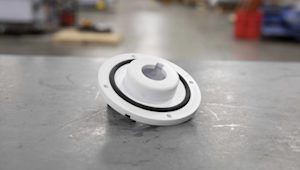
Find out about the manufacturing technique used to injection mold a second material over or around a part to create a new one.
Read article
Want to learn more about die casting? In this article, we’ll take a look at the process, its history and current uses, advantages, design guidelines, and more.
Read article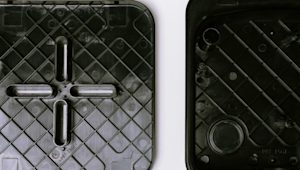
In this article, we’ll take a look at common factors that influence the cost of injection molding, including equipment, labor, and materials – as well as tips for reducing manufacturing costs.
Read article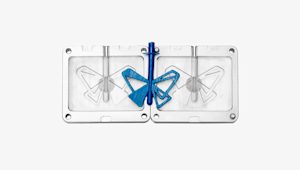
What are the most common defects in the injection molding process and how do you avoid them? This article provides six essential design tips for avoid production defects while reducing the cost and lead time of your molded parts.
Read article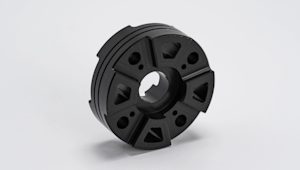
What is Delrin and why is it unique among the many manufacturing materials available? Delrin, or POM-H (homopolymer acetal), is used in CNC machining, 3D printing and injection molding to create durable, precise components. This article explores Delrin’s properties and how to get the most out of the material.
Read article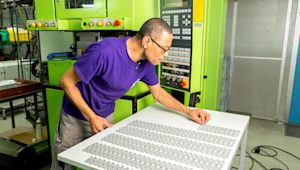
What are the common applications of injection molding? What sets it apart as a manufacturing process? This article covers the key benefits of injection molding and provides insight into whether injection molding is right for your industry’s applications.
Read article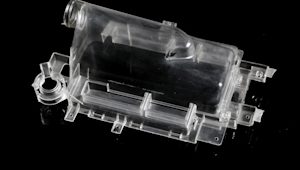
Why is it important to design draft angles for injection molding custom parts? This article covers why draft angles are essential and how to design them better to get the most out of your injection molding designs.
Read article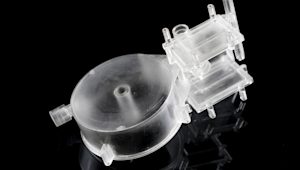
How do you optimize part design for injection molding? This complete guide to designing for injection molding provides basic and advanced design tips, including guidelines for creating snap-fits, living hinges and undercuts, and accounting for optimial surface finishes.
Read article
What SPI surface finishes does Protolabs Network have for injection molding custom parts? Check out the standard SPI mold finishes we offer and our material recommendations to get the most out of injection molding.
Read article
Learn what to consider when making a choice between 3D printing and injection molding, the benefits of each manufacturing method, and more.
Read article
Want to learn how to design undercuts that don’t cause damage to your parts? Check out our article, which offers tips and tricks for DFM with undercuts, examples of when you might need them, and more. Undercuts in injection-molded parts present a host of challenges to designers and manufacturers. In this article, we’ll take a look at the definition of undercuts, their purpose, applications, and tips for designing parts with them.
Read article
When producing parts with injection molding, understanding the range of materials that are available is crucial. Find out more about those materials, their properties, and factors to consider when choosing a material for injection molded parts.
Read article
Find out about the manufacturing technique used to injection mold a second material over or around a part to create a new one.
Read article
Want to learn more about die casting? In this article, we’ll take a look at the process, its history and current uses, advantages, design guidelines, and more.
Read article
In this article, we’ll take a look at common factors that influence the cost of injection molding, including equipment, labor, and materials – as well as tips for reducing manufacturing costs.
Read article
What are the most common defects in the injection molding process and how do you avoid them? This article provides six essential design tips for avoid production defects while reducing the cost and lead time of your molded parts.
Read article
What is Delrin and why is it unique among the many manufacturing materials available? Delrin, or POM-H (homopolymer acetal), is used in CNC machining, 3D printing and injection molding to create durable, precise components. This article explores Delrin’s properties and how to get the most out of the material.
Read article
What are the common applications of injection molding? What sets it apart as a manufacturing process? This article covers the key benefits of injection molding and provides insight into whether injection molding is right for your industry’s applications.
Read article
Why is it important to design draft angles for injection molding custom parts? This article covers why draft angles are essential and how to design them better to get the most out of your injection molding designs.
Read article
How do you optimize part design for injection molding? This complete guide to designing for injection molding provides basic and advanced design tips, including guidelines for creating snap-fits, living hinges and undercuts, and accounting for optimial surface finishes.
Read article
What SPI surface finishes does Protolabs Network have for injection molding custom parts? Check out the standard SPI mold finishes we offer and our material recommendations to get the most out of injection molding.
Read articleShow more
Show less